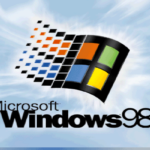Scaling of display size is a key responsive feature for applications on any OS. every application that is being developed for a specific OS will be made responsive in several ways and display scaling is one of them, particularly when it comes to apps for Windows OS, it is crucial that the scaling is allowed as the monitor will be wide and the visibility of the content displayed matters the most. Well, applications developed exclusively for Windows OS are made to adapt to the varying monitor size and the OS and even the minimization function of the OS makes these applications scale at times.

So, any Windows application should scale according to the command but at times, the scaling doesn’t happen automatically and users encounter some issues with scaling on Windows. So, here we will discuss the common issue that is being faced by many users, that is some applications won’t respond to scaling on Windows 10 and 11 computers.
Recommended Post:- How to use Device Encryption in Windows 11
What Causes Applications to not Scale or Respond to Scaling Changes
Displays for computers come in various sizes and configurations. The most common displays used for Windows systems are the LCD displays that come in various dimensions depending on the use. Some of the most standard displays are 19- 34 inches, measured diagonally but gaming monitors are much wider. So applications built for Windows OSes have to be pretty responsive and have to be scalable, and versatile.
The issue with the OS
This is an issue caused by the scaling changes introduced in Windows 10. When you scale down the resolution of any window, the system assumes the size of the pixels does not change, thus making it impossible for the app to respond to these types of events.

Scaling Feature Unsupported by Default
Some applications by default do not support scaling. These applications were built to run on fixed setups and are not versatile enough to respond to scale. Well, such applications are very rare these days, but some applications that do not need scaling might be the case and hence, when you try to scale it manually, the display seems to be distorted.
Outdated Drivers
Outdated display drivers can be a possible reason for applications not responding to scaling on Windows 10/11. Well, with drivers being an important component in bridging the display with the computer, it is possible that an outdated graphic driver can cause such issues and errors. Well, the resolution is pretty simple and this is to update the driver firmware or software.
Outdated Windows OS
Well, with the tech world evolving, every aspect of the computer is evolving rapidly. With this being the fact the developer of the application will evolve the application to the next level to support the latest features and when the OS that it is run on is old, there might be some counterfeit, and errors could occur. Well, this is a very rare case as the possibility of an application getting updated exceeds the OS but it is possible if you did not update your computer OS for a long time.
Outdated Application
An outdated application can be the cause of the issue on your computer, the outdated application can not be capable of comprehending the newest display driver or the OS and there might be issues.
Some simple methods of Apps won’t Respond to Scaling Changes on Windows 10 & 11
So, now that we have discussed the causes for the apps won’t respond to the scaling changes, now, let’s discuss the solutions to fix the issue so you can effectively scale the application on your Windows 10 & 11 computer.
Method 1: Relaunch the Application
Closing the application and then relaunching it will be a great way to resolve it as relaunching the application will make the application restart with all the necessary files loaded for the application to run smoothly with all the functions running efficiently.

Method 2: Update the Graphic Drivers
Drivers are a very important part of the OS and it enables the graphic hardware to function efficiently. The graphic driver needs to be efficiently managed and updated frequently whenever the update is available, so to update the graphic driver on your computer, follow the simple method and update the driver.
- To update the graphic driver on your computer, open the device manager by using the search option in the taskbar.
- Now, in the device manager, look for the graphic driver and then right-click on it.
- Now, in the menu, select the update driver option.
- Now, select the search automatically for the driver option.
- The wizard will automatically download and install the latest driver firmware.
Method 3: Update the Application that is Not Scaling Responsively
- To update the application that is causing issues on your computer, go to the official website of application.
- Here, find the latest version of the application and then download the installation file.
- Once you have the installation file Downloaded, install the application on your computer.

Method 4: Update Windows OS
- To update the Windows OS, open the settings application.
- Here, go to the updates and security tab.
- Here, find the check for updates option and click on it.
- Now, your computer will check for updates and you can Install it on your computer.
- After the installation is done your computer will restart and now, you can check whether the app functions well and the scaling is perfect.

These are some simple methods that you can use to fix the apps that Won’t Respond to Scaling Changes in Windows 10 and 11.
Hope the information provided above was helpful and informative, with these simple methods, you can fix the issue effectively on your computer.







